Whatever happened to the romance of long-distance truck driving? It disappeared from the scene a long time ago: today’s drivers are often expected to load and unload their vehicles themselves, maneuver in tight spaces, wait in line for hours and hours, and cover seemingly endless kilometers. Drivers and their trucks work hard every day in logistics chains that are becoming increasingly streamlined. But Bosch is there to provide support. “Our connected technologies are like good copilots who take the strain off drivers day in, day out,” says Dr. Markus Heyn, member of the board of management of Robert Bosch GmbH in charge of the commercial vehicle business. Bosch solutions improve working conditions, making driving safer and more comfortable. The VisionX concept study, which Bosch presents at the 2016 IAA Commercial Vehicles trade fair, gives some idea of how the future might look behind the wheel of a truck. It reveals how connectivity combined with modern display and control instruments can provide the basis for intelligent cargo and route management as well as automated driving. It also presents the concept of platooning, which will make drivers’ lives easier on long journeys in the future.
Intelligent displays provide a better overview
Efforts to improve conditions for drivers start in the cab. “Right now, a truck driver’s workplace is just a jungle of switches and levers,” says Heyn. “It does not lend itself to intuitive operation at all.” This increases the risk of mistakes in the driver’s cab: the nerve center of long-distance driving. This cockpit environment will undergo radical changes in the future. “We want to create an interface that is as easy to use as a modern smartphone,” says Heyn in sketching out Bosch’s vision. One way to improve working conditions is to introduce clear, hierarchal control structures for rarely used functions together with displays adapted to each specific situation, such as convoying. This approach involves an electronic resource manager, which works in the background to keep the information and indications displayed to drivers at a sensible minimum, allowing them to focus their attention on the road. The cab of the future will be enhanced with a system of displays and cameras that monitor the traffic behind the vehicle, effectively replacing rear-view mirrors. Besides providing a better view when changing lanes, this system will also overcome the problem of blind spots. What’s more, the addition of a night mode will improve the driver’s vision in the dark.
Platooning will make drivers’ lives easier on long journeys in the future
“Automated trucks are the future, and we will be playing a major part in their development,” says Heyn. In the commercial vehicle sector, Bosch is currently focusing on automated driving on freeways. “We are looking at real-world use cases where automated driving offers the greatest benefits.” Platooning involves multiple trucks traveling in a platoon with 10-15 m between them, all following a lead vehicle to which they are electronically connected and linked along a virtual longitudinal axis. All the trucks in the platoon accelerate, brake, and steer in sync with the lead vehicle. First and foremost, automated driving in the slipstream of the truck in front cuts fuel consumption by up to 10%, but it also makes the driver’s work easier and improves safety. When a truck turns onto the freeway, it is initially steered by the driver until it receives data identifying a suitable convoy. The same applies when the truck leaves the platoon to exit the freeway. Depending on how it is configured, automated platooning is likely to take at least another 5-10 years to reach maturity. Until then, Bosch assistance systems will fill the gap to help truck drivers manage congestion, change lanes, make turns, and bring their vehicles to a full stop in increasingly dense volumes of traffic. Bosch accident researchers estimate that, of all accidents caused by trucks involving physical injury, 90% could be avoided in the future by using these systems.
Read more about truck platooning in the article "Follow the Leader."
Connectivity helps drivers find parking spaces
It is not just traffic congestion woes that cause stress for drivers, but the lack of suitable parking areas along major highways, too. Estimates suggest that Germany alone needs 21,000 more truck parking spaces. What’s more, the parking areas that do exist are currently used inefficiently. This is another area where Bosch technology can help. “Secure Truck Parking is a Bosch solution that draws on the benefits of connectivity to tackle the shortage of parking spaces,” says Dr. Johannes-Jörg Rüger, president of the commercial vehicle and off-road unit at Bosch. “The service will be available starting this fall.” Drivers will receive information from the Bosch IoT Cloud on which parking spaces are free, allowing them to reserve a space in advance at a freeway rest area or designated truckers’ parking zone. Equipped with barriers, cameras, and access control systems, these parking areas protect trucks against theft and damage when drivers stop to take a break or spend the night.
Logistics processes go digital at last
Although the clipboard for shipping documents is still ubiquitous at many freight forwarders’ offices, its days are numbered. As in so many other areas, the future here is digital. Thanks to increasing connectivity, those involved in the cargo management process will be able to use an app to exchange data securely and exclusively among themselves in a simple and fully electronic process. This will eliminate a lot of paperwork for the forwarding company, customer, and driver. Service centers will constantly monitor the cargo of a connected vehicle, protecting it against theft and thus protecting drivers against attacks as well.
Predictive maintenance prevents unscheduled downtime
Another way of taking the strain off drivers is to minimize the time they spend worrying about truck maintenance. In the future, Bosch predictive maintenance will provide them with the reassurance they need. The truck transfers all the data relevant to repairs and servicing to a computer center in an encrypted format. The center then uses that data to compile a report on the vehicle’s condition and sends it to the forwarding company, which can neatly arrange the truck’s schedule to accommodate its visits to the repair shop. The benefit for drivers is that they can focus exclusively on their journey knowing that no maintenance work has been scheduled during their shift. “Predictive maintenance is a fantastic example of how innovative Bosch technology can benefit both drivers and forwarding companies,” says Rüger.

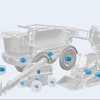
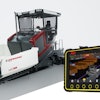
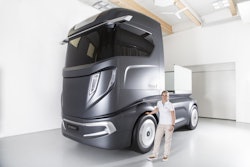
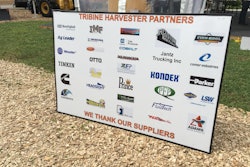
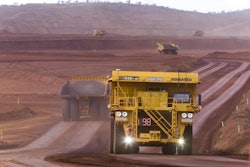
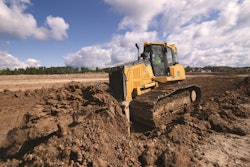


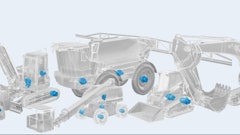
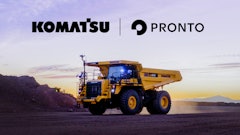
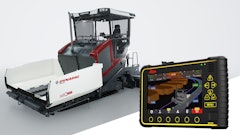
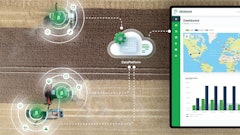
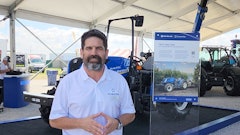

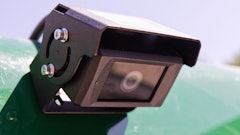
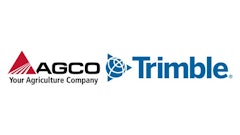
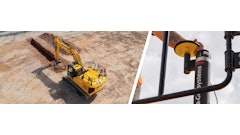
![Hd Hyundai Xite Transformation Booth Image[1]](https://img.oemoffhighway.com/files/base/acbm/ooh/image/2023/12/HD_Hyundai_Xite_Transformation_Booth_Image_1_.657a32d4218f2.png?ar=16%3A9&auto=format%2Ccompress&fit=crop&h=135&q=70&rect=113%2C0%2C1600%2C900&w=240)
